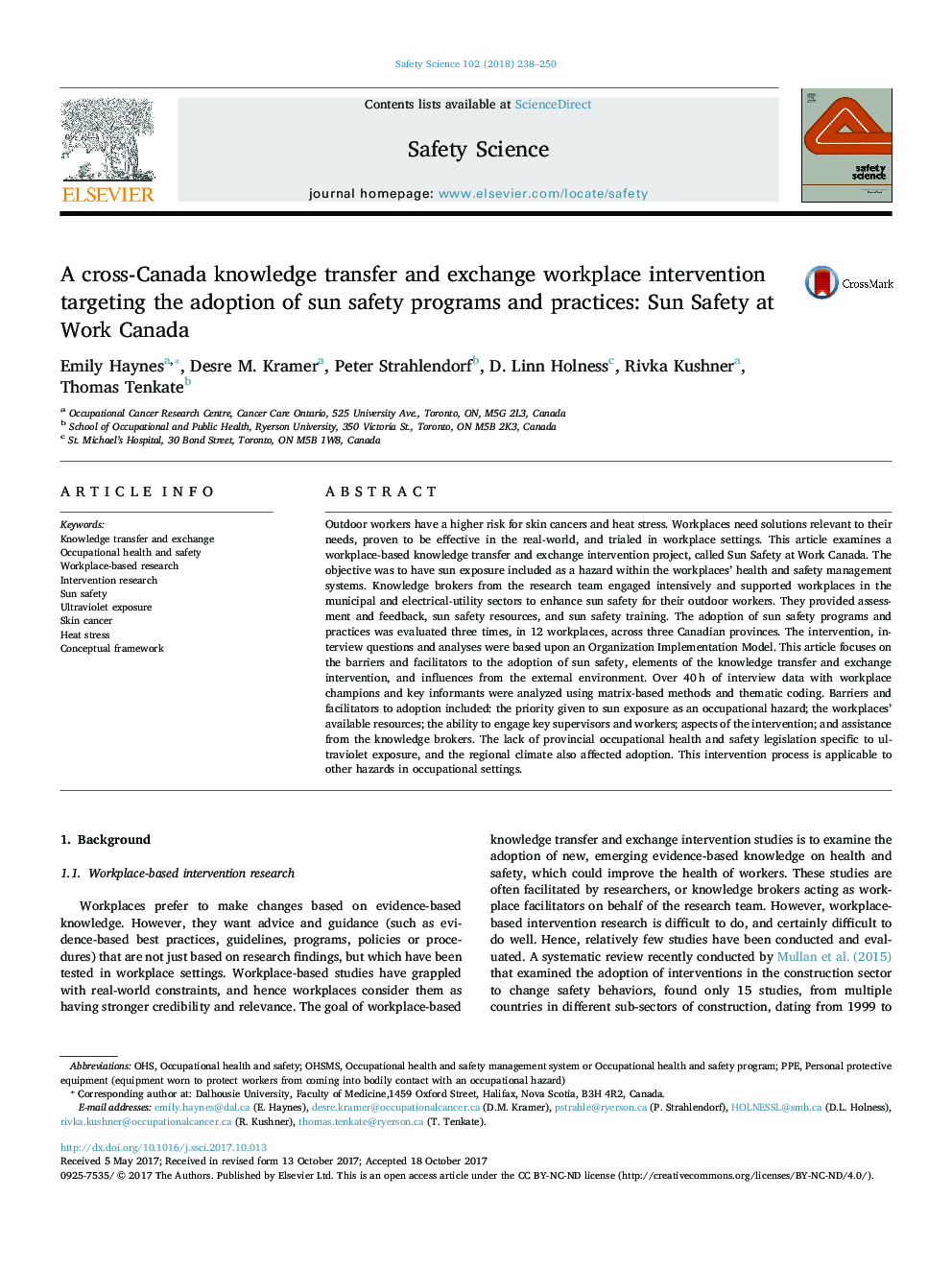| Article ID | Journal | Published Year | Pages | File Type |
|---|---|---|---|---|
| 6975161 | Safety Science | 2018 | 13 Pages |
Abstract
Outdoor workers have a higher risk for skin cancers and heat stress. Workplaces need solutions relevant to their needs, proven to be effective in the real-world, and trialed in workplace settings. This article examines a workplace-based knowledge transfer and exchange intervention project, called Sun Safety at Work Canada. The objective was to have sun exposure included as a hazard within the workplaces' health and safety management systems. Knowledge brokers from the research team engaged intensively and supported workplaces in the municipal and electrical-utility sectors to enhance sun safety for their outdoor workers. They provided assessment and feedback, sun safety resources, and sun safety training. The adoption of sun safety programs and practices was evaluated three times, in 12 workplaces, across three Canadian provinces. The intervention, interview questions and analyses were based upon an Organization Implementation Model. This article focuses on the barriers and facilitators to the adoption of sun safety, elements of the knowledge transfer and exchange intervention, and influences from the external environment. Over 40â¯h of interview data with workplace champions and key informants were analyzed using matrix-based methods and thematic coding. Barriers and facilitators to adoption included: the priority given to sun exposure as an occupational hazard; the workplaces' available resources; the ability to engage key supervisors and workers; aspects of the intervention; and assistance from the knowledge brokers. The lack of provincial occupational health and safety legislation specific to ultraviolet exposure, and the regional climate also affected adoption. This intervention process is applicable to other hazards in occupational settings.
Keywords
Related Topics
Physical Sciences and Engineering
Chemical Engineering
Chemical Health and Safety
Authors
Emily Haynes, Desre M. Kramer, Peter Strahlendorf, D. Linn Holness, Rivka Kushner, Thomas Tenkate,
